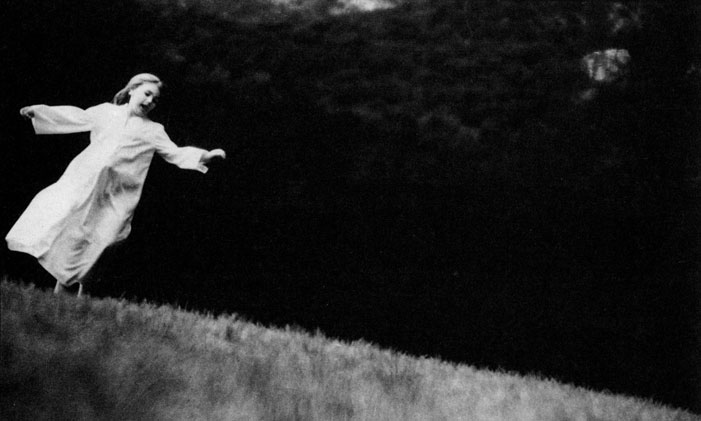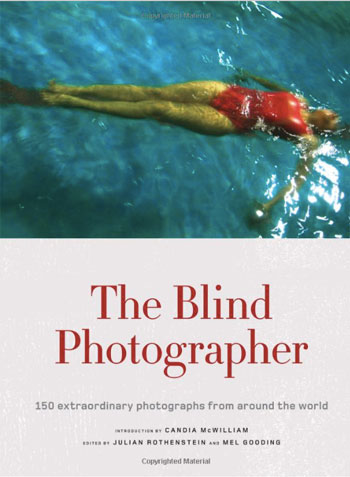Meet Teco Barbero, Brazilian, blind, and photographer. In fact, Teco Barbero works as a professional photographer. With a vision of 5%. Unbelievable, but true. He is blind, and has a feel for great images. He sees in the dark. With his hearing, touch, taste and smell.
Antônio Valter (Teco) Barbero was born visually impaired, but that did not stop him from following a dream and becoming a photographer. In 2002 he rediscovered the visual world by enrolling in a photography course, inspired by the motion picture Proof whose protagonist is also a blind photographer from birth.
During the first few months of the course he was encouraged to work more on his sensory side. After gaining confidence and overcoming prejudices he began to develop all his talent in practice. “You don’t have to see it, you must feel it,” Teco Barbero said.
In 2010, Teco Barbero began giving classes voluntarily in a mini-course of photography in the city of São Paulo. Since then, he has traveled to various parts of the country to teach the art of writing with light to all kinds of people.
In an interview in 2012 he revealed:
We visually impaired people who have ventured into the art of photography have proven that, for those who capture images, light is not the most important, as we take pictures with the sensitivity of our soul.
As a blind photographer Teco Barbero subverts the idea of photography as an act of looking. He and other blind photographers are united by an often elaborate imaginative vision of the world, rather than an actual one — memory, emotions and experience all feed into an acute and heightened way of seeing.
Said Evgen Bavčar, a blind Slovenian philosopher and photographer:
Even a blind person has visual equipment, optical needs, as someone who is longing for light in a dark room. From this desire, I photograph.

You don’t need perfect vision to create a great image, as the book The Blind Photographer proves, showcasing the beautiful work of visually impaired artists from South American and Europe.

For sighted people, the idea of a blind photographer is a contradiction in terms, the medium being so purely visual in regard to subject, style, light and composition.
The British photographer Martin Parr described the book as “a revelation” and notes how blind photographers “capture a feeling about the world and their relationship to it through photography which is often as elegant and compelling as sighted photographers.”
How, though, does a blind photographer manage to somehow “see,” and transform, the world through a camera in images that, in the case of the totally blind, he or she will never actually see?
On a purely practical level, many blind photographers work with assistants to advise them on camera positions and composition, while others employ cutting-edge digital technology, reports The Guardian.
A smartphone camera app developed at the University of California Santa Cruz, for instance, allows photographers with impaired vision to dispense with the shutter button, which many find difficult to locate, in favor of an upward swiping gesture. The app also uses facial recognition technology; through the phone’s built-in speaker it announces the number of faces in a frame and also helps the photographer using audio instructions.
Digital technology has made the hands-on process of photography altogether more accessible for blind and partially sighted people, yet, much more than for all of us, they must also rely to a large degree on ingenuity and instinct.
Sight is not the only way to produce and enjoy an image. The process of creating a photograph also involves feeling, story, perception. We see with our brain, like when reading a book or listening to the radio. The mind creates images. So it is with blind people — through perceiving their surroundings they create images.
Like visually impaired photographer Aarón Ramos, a hero in his native Mexico, who makes allegorical images:
I use my senses — hearing, touch, taste and smell — when taking pictures. When I touch the camera lens I create an imaginary line from the lens to the object I am taking a picture of; I create the picture in my mind, I feel it and construct it to communicate feelings to the normal-visual world.
The machinery of photography is fundamentally simple, concludes CNN’s Mel Gooding. It is designed to catch the image that light creates on objects by means of a lens and mechanical processes. Being blind or sighted, having a camera, having a subject and a desire to make a visual image of it, the camera is pointed in the right direction and a button is pressed.
Now, the most sophisticated photographers in the world have often used the simplest cameras in the simplest ways; the most skilled and technically proficient photographers using the most advanced gear cannot guarantee that others will find their photographs interesting, beautiful, useful or valuable.
Moreover, no photographer, however accomplished, can know how any photograph will turn out. Think of those innumerable shots you take, in which, out of many many, maybe one photo is good enough. The blind photographer has, like every other photographer, an idea of what he or she wants to achieve.
What the sighted viewer makes of an image is a matter of individual response, just as it would be to any other image.
The blind photographer takes photographs just like any other photographer.


